Energy Storage
Brian Cashion
Energy Storage
Accure Battery Intelligence
Energy Storage
Jim Brown
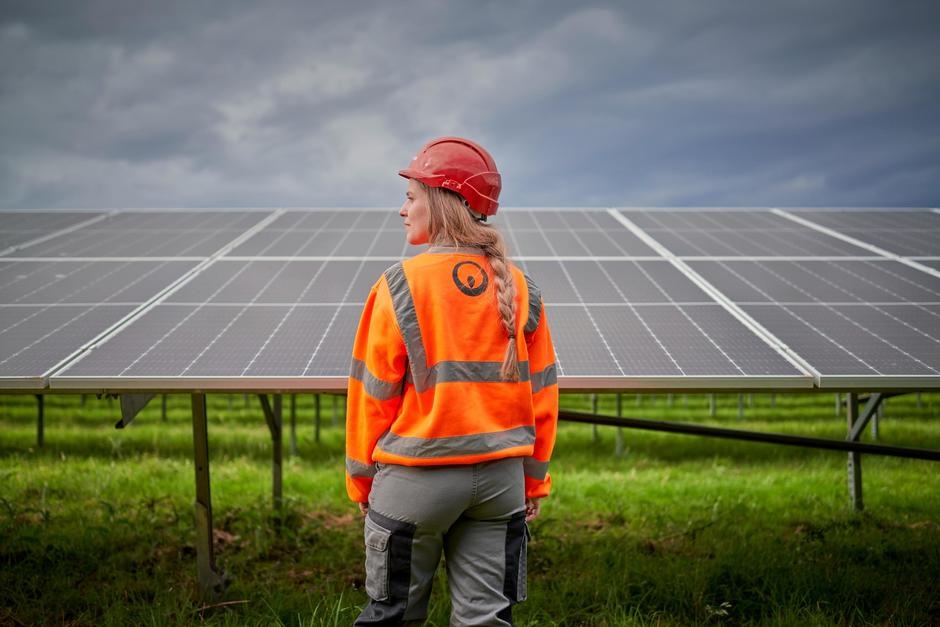
The City of Arvin, California and Veolia North America broke ground today on a new solar energy installation that will meet all the power needs of the city’s wastewater treatment plant and eliminate its greenhouse gas emissions from power generation. Since energy can account for as much as 30% of water treatment costs, this project provides an economic and environmental benefit.
Veolia has operated and maintained the City of Arvin’s wastewater treatment plant for more than a decade. Last year the city and Veolia began discussions about using renewable energy to reduce the cost and improve the reliability of the plant’s operation as part of Veolia’s GreenUp strategy, which aims to position Veolia as a driver of technological innovations. The project will generate one megawatt of electricity, or enough to power about 205 homes. The project is financed through a combination of low interest municipal financing and the Federal Inflation Reduction Act.
The City of Arvin has long been a sustainability leader among cities. They lead the nation in the number of electric vehicle charging stations per capita, and were the first city to adopt an all-electric fleet of city buses. This decarbonized wastewater plant is only the latest in a series of energy and greenhouse gas emission reduction projects undertaken by the city.
Susana Reyes, Arvin City Mayor Pro Tem, said: "We are pleased to be partnering with Veolia on this renewable energy project at the wastewater treatment plant.”
Jeff Jones, Arvin City Manager, said: "This project will save the City thousands of dollars on annual energy bills and is a great green energy project for Arvin.”
Christine Viterelli, Arvin’s Grant Manager,, who has been pioneering the city’s energy efficiency and fleet transition projects since 2016 said: “Arvin is a small, rural community in Kern County that is mighty when it comes to making significant progress in its fleet transition to electric, solar, and EV Charging. Every renewable energy project that is constructed will have an impact in reducing air pollution and greenhouse gasses.”
Patrick Schultz, CEO of Veolia Sustainable Industries and Buildings, said: “We are thrilled to partner the City of Arvin and our technical partners to make this unique renewable energy installation a reality. Forward thinking cities like Arvin recognize that water and energy are scarce resources that must be conserved for long-term community benefit. Projects like this are part of our ‘Green Up’ strategy. Veolia is uniquely positioned to help cities and industries improve their operations while meeting their sustainability goals.”
Veolia North America | www.veolianorthamerica.com

An essential package of permitting reform provisions that just passed the Minnesota Legislature—now on its way to be signed into law by Minnesota Governor Tim Walz—is the culmination of a nine-month effort by clean energy businesses, utilities, state agencies, regulatory staff, and environmental nonprofits to improve the state’s energy permitting process.
“The Minnesota Energy Infrastructure Permitting Act makes important changes to reduce redundancies and improve efficiencies to the state’s permitting process at the Minnesota Public Utilities Commission (MN PUC), the agency responsible for approving permits for large-scale energy projects, including wind, solar, and battery storage. Last year, Minnesota passed a law requiring its utilities to generate or procure 100% of retail sales for public utility customers from carbon-free resources by 2040, 55% of which must be renewable (i.e., wind, solar, hydro, biomass) by 2035.
“The Energy Infrastructure Permitting Act will be critical to meeting Minnesota’s goal of 100% carbon-free electricity by 2040,” said Erika Kowall, Director, Midwest State Affairs, American Clean Power Association (ACP.) “Minnesota already ranks tenth in the nation for clean energy production, and Governor Walz’s leadership on this issue will deliver real value to Minnesotans moving forward. ACP looks forward to continuing to work with Minnesota leaders to help unleash the state’s full clean energy potential.”
Clean Grid Alliance (CGA), which works to advance renewable energy in the Midwest, was a strong advocate for the permitting package. “Siting and permitting is the largest roadblock to deploying renewable projects across the Midwest, and the reforms in this package ensure Minnesota’s policies demonstrate the state’s readiness to welcome the clean energy transition,” said Beth Soholt, Executive Director, CGA.
Clean Grid Alliance | https://cleangridalliance.org/
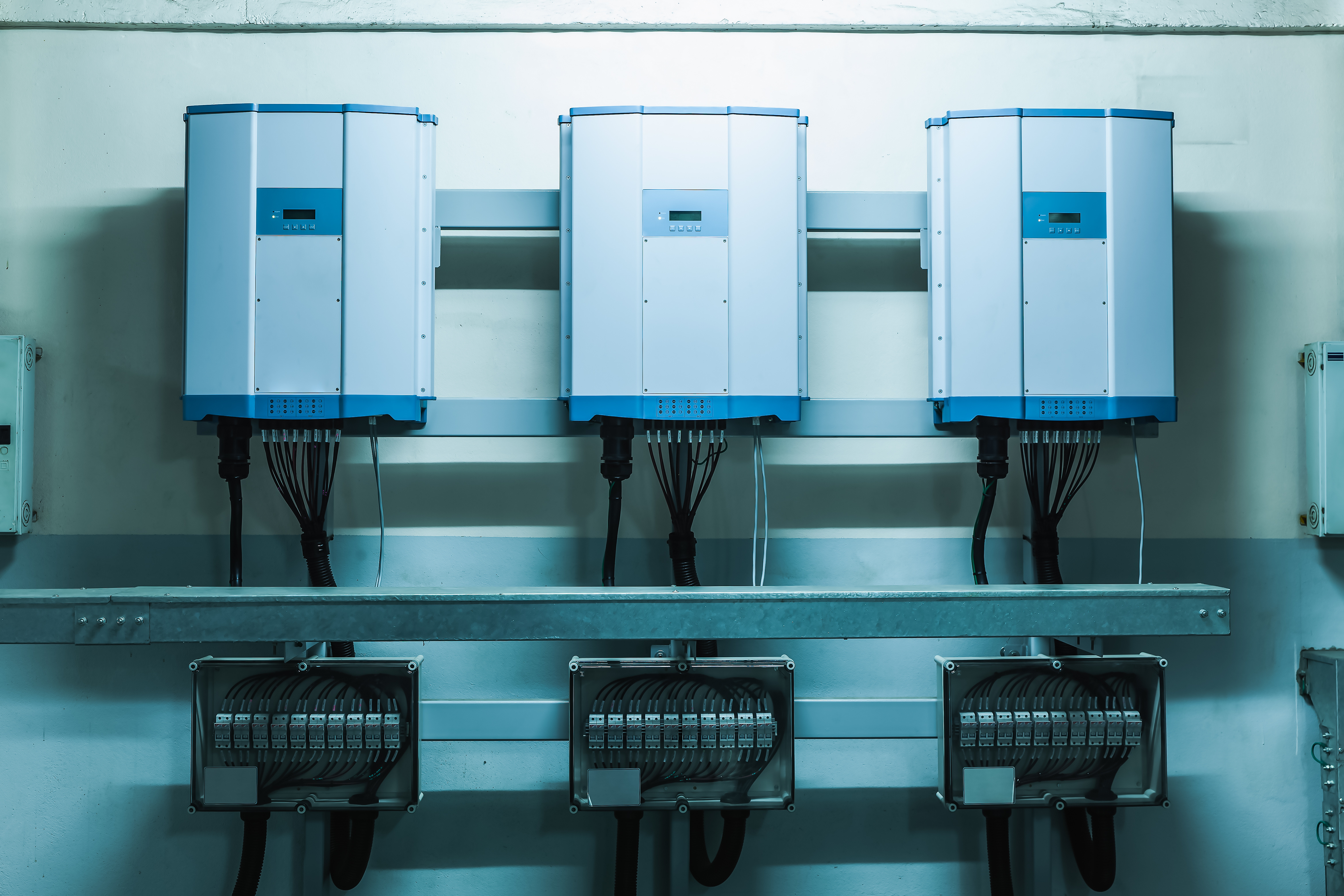
The National Electrical Manufacturers Association (NEMA) and the Bipartisan Policy Center (BPC) hosted a timely event on reshoring supply chains and boosting electrical manufacturing. “Charging Up EV Infrastructure Deployment and Clean Tech Supply Chains” examined progress, challenges and solutions to building EV infrastructure and battery manufacturing in the United States.
With historic investment from the Infrastructure Investment and Jobs Act (IIJA) and Inflation Reduction Act (IRA), billions of dollars are being channeled into electrification and e-mobility. However, the grid required to support this added energy demand and the workforce necessary to build it are not keeping pace, Debra Phillips, President and CEO, NEMA told the audience of lawmakers, energy and climate organizations and media.
“Our members have already made $12 billion of investments to date in dozens of manufacturing facilities around the country to foster and strengthen domestic manufacturing and supply chain capabilities for EV charging equipment.” said Phillips. “But we are losing 3,000 electricians a year. We need a strong domestic focus on attracting and retaining the next generation of workers.”
One of NEMA's members, Siemens, is active across the US in creating those jobs. “Think of us as the glue between the grid and all of the EV chargers being deployed,” said Barry Powell, North American Head, Electrical Products Business, Siemens Smart Infrastructure. “Our mission is to develop the technologies to enable this transition and to empower communities through workforce development and educational initiatives to meet the demand needed to build this infrastructure.”
North Carolina is also a hub for EV activity and investment. Senator Thom Tillis (R-NC) shared his bipartisan history dating back to his first year in the North Carolina State Legislature and offered his insights on where the state is going. “The EV economy, manufacturing, critical minerals and mining, these are areas where North Carolina is leading,” said Tillis. “It’s amazing what bipartisanship can achieve and the IIJA is great example of that.”
Like North Carolina, Tennessee is also at the head of the pack in terms of EV investment and implementation. Citing Ford and SK On’s investment into West Tennessee’s Blue Oval City, Sen. Marsha Blackburn praised the thousands of jobs that will be created with that investment and previewed additional resources directed towards the manufacturing of battery and other EV components in Tennessee.
“We are America’s automaker; innovation is our heritage and our future,” said Evan Belser, Managing Counsel and Policy Strategist, Ford Motor Company. We are committed to supporting the infrastructure that leads to range confidence. There is a tremendous opportunity with EVs, not only for our transportation systems, but also as assets which help store and distribute electricity and help respond to more severe weather events.”
“This discussion illuminated the progress being made in all regions of the country in deploying EV infrastructure, as well as some of the remaining gaps,” said Lesley Jantarasami, Managing Director of the Energy Program, BPC. “There are growing opportunities for collaboration between the public and private sectors to ensure America’s workforce and infrastructure are primed and ready to meet the energy and transportation needs of the future.”
A full recording of the event is available here.
National Electrical Manufacturers Association | www.nema.org
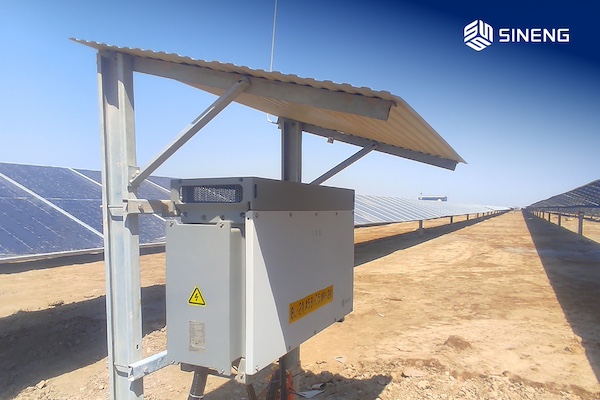
Sineng Electric, a global leading PV+ESS solution provider, is proud to announce its instrumental role in powering a 641MW solar project in Gujarat, India, part of the 30GW Khavda Solar Park. Once completed, the Khavda Solar Park will power 16.1 million Indian homes and stand as the world's largest renewable energy installation.
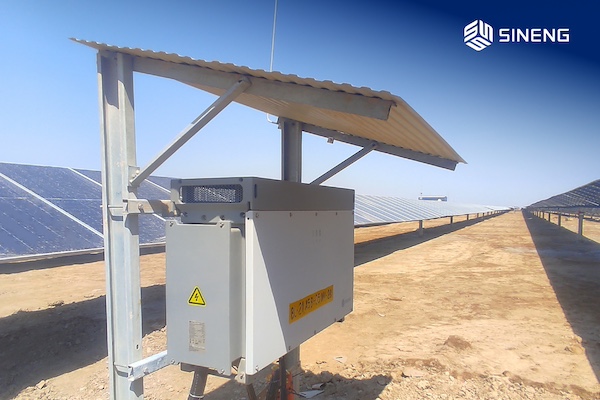
The 641MW solar project, which is developed and owned by Adani, is expected to generate approximately 1,900,000 MWh of clean energy annually. This will significantly offset CO2 emissions by an estimated 913,428 tons each year, equivalent to planting 4,567,124 trees.
Sineng's contributions to the project include the supply of 2,887 units of its cutting-edge 275kW string inverters (SP-275K-INH). Featuring maximum efficiency of 99.03%, 12 MPPTs, and compatibility with bifacial PV modules, Sineng's inverters enhance solar power generation and optimize the LCOE. The inverters support up to 24 PV strings, aluminum cable connection, and PLC communication, thus lowering the system costs. Additionally, their IP65 and C5 anti-corrosion protection ratings ensure the system's reliability and longevity.
Mr. Arun Chaudhary, Head of Sales for North India, emphasized the impact of Sineng's involvement, stating, "With our extensive expertise in utility-scale PV projects, excellent quality assurance, robust supply chain, and localization strategy, Sineng is at the forefront of India's energy transformation. We look forward to accelerating the country's journey toward decarbonization and a sustainable future."
Moreover, the project has created over 2,500 jobs during the construction phase, boosting local employment opportunities. Sineng will remain dedicated to continuous technological advancements and providing top-notch renewable energy solutions that deliver significant economic and environmental benefits.
Sineng Electric | https://en.si-neng.com/
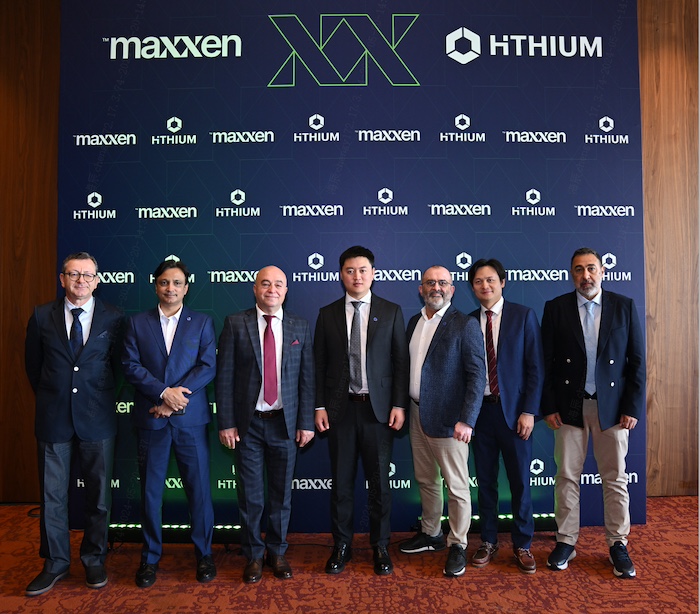
Stationary battery manufacturer Hithium and Maxxen, a 100 percent subsidiary of Kontek Energy, which has 30 years of energy industry experience have announced their exclusive strategic partnership at the Türkiye launch of this cooperation on May 17, 2024, in Istanbul, Türkiye.
Hithium and Maxxen have joined forces in an exclusive strategic partnership agreement in the field of energy storage for the battery energy storage system and the trademark rights of Hithium. This will result in the creation of more sustainable energy systems globally and locally.
As Hithium GM of the Middle East region and Head of Global Delivery Centre, Sean Sun commented: “It's very promising to cooperate with Maxxen to contribute to energy transition with both parties in Türkiye. This bonding relationship will enhance our market competitiveness and together dedicate to the needs of affordable, reliable and flexible energy storage solution.”
As Maxxen & Kontek CEO, Tolga Murat Özdemir commented: “We, at Maxxen, believe that cooperating with Hithium as one of the leading manufacturer of BESS Systems in the world focused only in Stationary Energy Storage, will help create a synergy to expand the business of two companies around the region not only by being closer to the projects to supply shorter deliveries and better after sale services with outstanding quality and manufacturing processes but at the same time using the capabilities of Maxxen in contributive digital solutions will also help develop value added derivative complete solutions to the related markets.”
This partnership between Hithium and Maxxen represents an important step towards a cleaner future. The objective is to play a key role in making a difference in the energy storage sector by establishing a battery energy storage systems production facility in Türkiye. In furtherance of the aforementioned agreement, the two companies have agreed that they will endeavor to develop groundbreaking innovations in the field of sustainable energy. Hithium and Maxxen are committed to contributing to the worldwide energy transition by accelerating the spread of battery energy storage technologies to wider audiences.
Hithium | https://hithium.com/en/

Babcock & Wilcox (B&W) (NYSE: BW) announcedtoday that Babcock & Wilcox Construction Co., LLC (BWCC) has been awarded U.S. power plant outage and rebuild work valued at more than $20 million.
“Keeping the existing baseload power fleet operating is critical to energy security, reliability and affordability, and demand for plant maintenance services remains strong as plant owners recognize the importance of extending the operating life of their power generating assets and keeping them running at maximum efficiency,” said BWCC Vice President and General Manager Mike Hidas.
“These outage and rebuild work agreements also drive increased demand for replacement parts,” Hidas said. “B&W is a trusted provider of replacement parts for B&W and competitors’ equipment, including a wide range of power plant, boiler, auxiliary and environmental equipment.”
BWCC provides outage services, installation, refurbishment, mechanical repair and maintenance services for a variety of industries – including utilities, oil and gas, petrochemical, pulp and paper and others – as well as equipment and plant installations, regardless of the original manufacturer.
Babcock & Wilcox Enterprises | babcock.com

Valmet has announced the appointment of Rocky Matuska as Vice President, Services, North America. Matuska’s appointment will become effective on August 1, 2024. In his new role, Matuska will be responsible for leading and managing all Valmet Services operations in North America. He will also become a member of the North America Area Management Team (AMT).
Matuska is currently Director, Sales & Technology, Paper and Board, North America Capital Business at Valmet. He is based in Valmet’s Beloit, WI, facility and will remain there following his appointment. He will succeed Kari Lindberg, Sr. Vice President, Services, North America, who will retire in early 2025.
Matuska holds a Bachelor of Science degree in mechanical engineering and has over 30 years of experience in the pulp and paper industry. His proven track record of success in the industry includes engineering positions for Beloit Corporation and PMP Americas. Matuska also played an integral role in integrating the small and medium-size equipment (SMM) business into the Valmet North America portfolio.
Valmet | valmet.com

Alternative Energies Jun 26, 2023
Unleashing trillions of dollars for a resilient energy future is within our grasp — if we can successfully navigate investment risk and project uncertainties. The money is there — so where are the projects? A cleaner and more secure energy ....
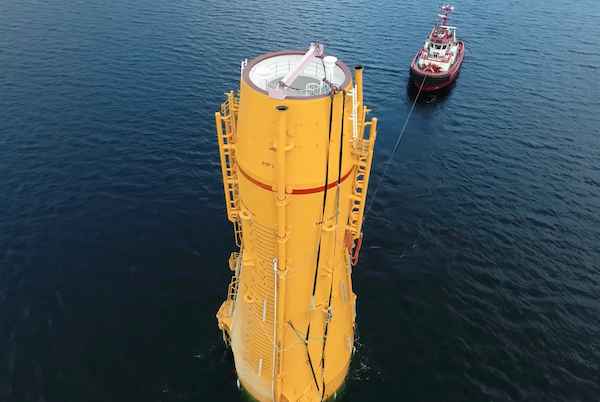
The Kincardine floating wind farm, located off the east coast of Scotland, was a landmark development: the first commercial-scale project of its kind in the UK sector. Therefore, it has been closely watched by the industry throughout its installation. With two of the turbines now having gone through heavy maintenance, it has also provided valuable lessons into the O&M processes of floating wind projects.
In late May, the second floating wind turbine from the five-turbine development arrived in the port of Massvlakte, Rotterdam, for maintenance. An Anchor Handling Tug Supply (AHTS)
vessel was used to deliver the KIN-02 turbine two weeks after a Platform Supply Vessel (PSV) and AHTS had worked to disconnect the turbine from the wind farm site. The towing vessel became the third vessel used in the operation.
This is not the first turbine disconnected from the site and towed for maintenance. In the summer of 2022, KIN-03 became the world’s first-ever floating wind turbine that required heavy maintenance (i.e. being disconnected and towed for repair). It was also towed from Scotland to Massvlakte.
Each of these operations has provided valuable lessons for the ever-watchful industry in how to navigate the complexities of heavy maintenance in floating wind as the market segment grows.

The heavy maintenance process
When one of Kincardine’s five floating 9.5 MW turbines (KIN-03) suffered a technical failure in May 2022, a major technical component needed to be replaced. The heavy maintenance strategy selected by the developer and the offshore contractors consisted in disconnecting and towing the turbine and its floater to Rotterdam for maintenance, followed by a return tow and re-connection. All of the infrastructure, such as crane and tower access, remained at the quay following the construction phase. (Note, the following analysis only covers KIN-03, as details of the second turbine operation are not yet available).
Comparing the net vessel days for both the maintenance and the installation campaigns at this project highlights how using a dedicated marine spread can positively impact operations.
For this first-ever operation, a total of 17.2 net vessel days were required during turbine reconnection—only a slight increase on the 14.6 net vessel days that were required for the first hook-up operation performed during the initial installation in 2021. However, it exceeds the average of eight net vessel days during installation. The marine spread used in the heavy maintenance operation differed from that used during installation. Due to this, it did not benefit from the learning curve and experience gained throughout the initial installation, which ultimately led to the lower average vessel days.
The array cable re-connection operation encountered a similar effect. The process was performed by one AHTS that spent 10 net vessel days on the operation. This compares to the installation campaign, where the array cable second-end pull-in lasted a maximum of 23.7 hours using a cable layer.
Overall, the turbine shutdown duration can be broken up as 14 days at the quay for maintenance, 52 days from turbine disconnection to turbine reconnection, and 94 days from disconnection to the end of post-reconnection activities.
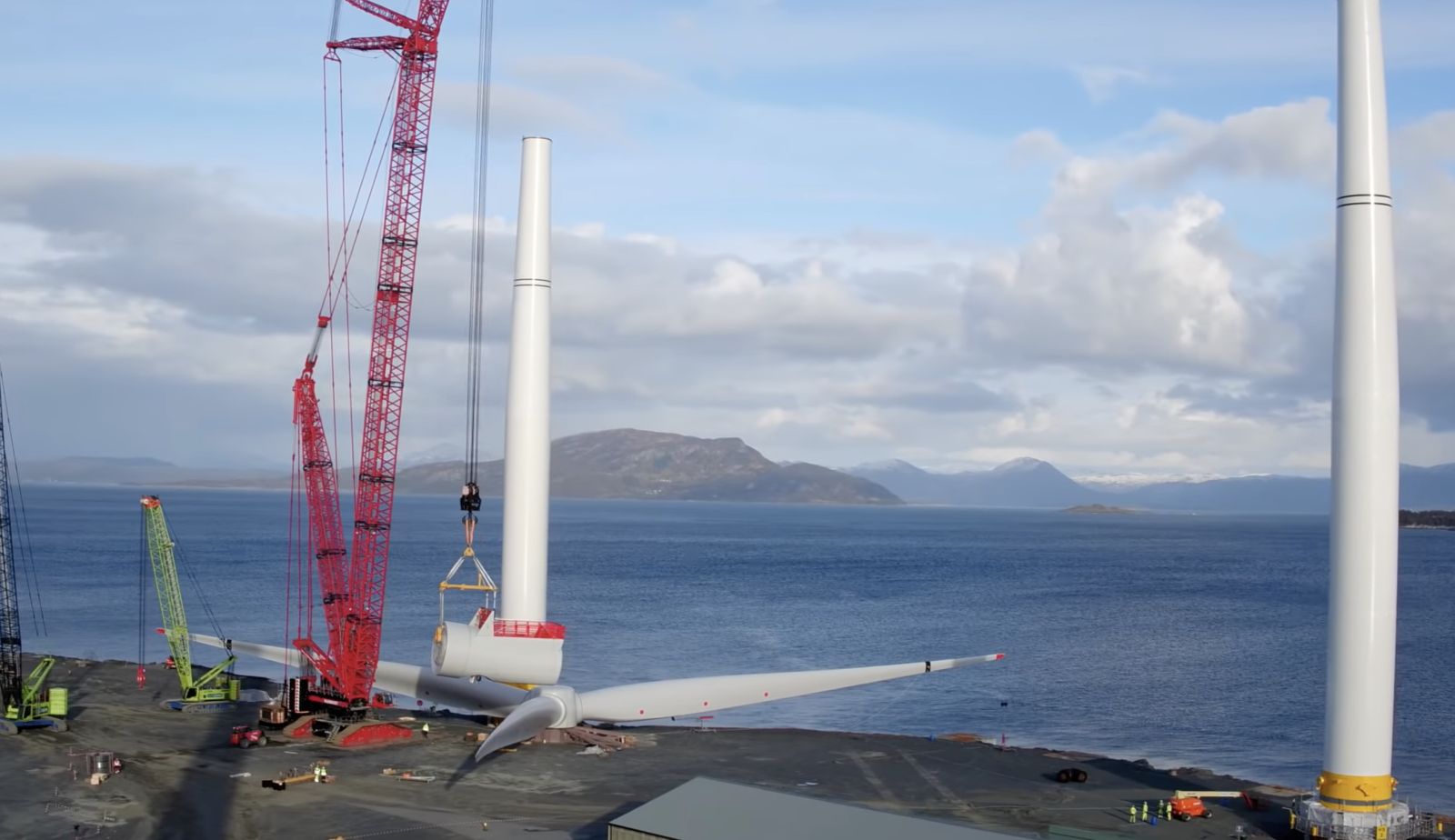
What developers should keep in mind for heavy maintenance operations
This analysis has uncovered two main lessons developers should consider when planning a floating wind project: the need to identify an appropriate O&M port, and to guarantee that a secure fleet is available.
Floating wind O&M operations require a port with both sufficient room and a deep-water quay. The port must also be equipped with a heavy crane with sufficient tip height to accommodate large floaters and reach turbine elevation. Distance to the wind farm should also be taken into account, as shorter distances will reduce towing time and, therefore, minimize transit and non-productive turbine time.
During the heavy maintenance period for KIN-03 and KIN-02, the selected quay (which had also been utilized in the initial installation phase of the wind farm project), was already busy as a marshalling area for other North Sea projects. This complicated the schedule significantly, as the availability of the quay and its facilities had to be navigated alongside these other projects. This highlights the importance of abundant quay availability both for installation (long-term planning) and maintenance that may be needed on short notice.
At the time of the first turbine’s maintenance program (June 2022), the North Sea AHTS market was in an exceptional situation: the largest bollard pull AHTS units contracted at over $200,000 a day, the highest rate in over a decade.
During this time, the spot market was close to selling out due to medium-term commitments, alongside the demand for high bollard pull vessels for the installation phase at a Norwegian floating wind farm project. The Norwegian project required the use of four AHTS above a 200t bollard pull. With spot rates ranging from $63,000 to $210,000 for the vessels contracted for Kincardine’s maintenance, the total cost of the marine spread used in the first repair campaign was more than $4 million.
Developers should therefore consider the need to structure maintenance contracts with AHTS companies, either through frame agreements or long-term charters, to decrease their exposure to spot market day rates as the market tightens in the future.

While these lessons are relevant for floating wind developers now, new players are looking towards alternative heavy O&M maintenance options for the future. Two crane concepts are especially relevant in this instance. The first method is for a crane to be included in the turbine nacelle to be able to directly lift the component which requires repair from the floater, as is currently seen on onshore turbines. This method is already employed in onshore turbines and could be applicable for offshore. The second method is self-elevating cranes with several such solutions already in development.
The heavy maintenance operations conducted on floating turbines at the Kincardine wind farm have provided invaluable insights for industry players, especially developers. The complex process of disconnecting and towing turbines for repairs highlights the need for meticulous planning and exploration of alternative maintenance strategies, some of which are already in the pipeline. As the industry evolves, careful consideration of ports, and securing fleet contracts, will be crucial in driving efficient and cost-effective O&M practices for the floating wind market.
Sarah McLean is Market Research Analyst at Spinergie, a maritime technology company specializing in emission, vessel performance, and operation optimization.
Spinergie | www.spinergie.com
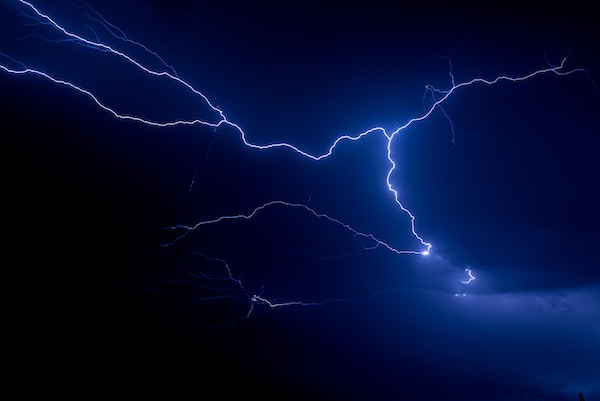
According to the Energy Information Administration (EIA), developers plan to add 54.5 gigawatts (GW) of new utility-scale electric generating capacity to the U.S. power grid in 2023. More than half of this capacity will be solar. Wind power and battery storage are expected to account for roughly 11 percent and 17 percent, respectively.
A large percentage of new installations are being developed in areas that are prone to extreme weather events and natural disasters (e.g., Texas and California), including high wind, tornadoes, hail, flooding, earthquakes, wildfires, etc. With the frequency and severity of many of these events increasing, project developers, asset owners, and tax equity partners are under growing pressure to better understand and mitigate risk.
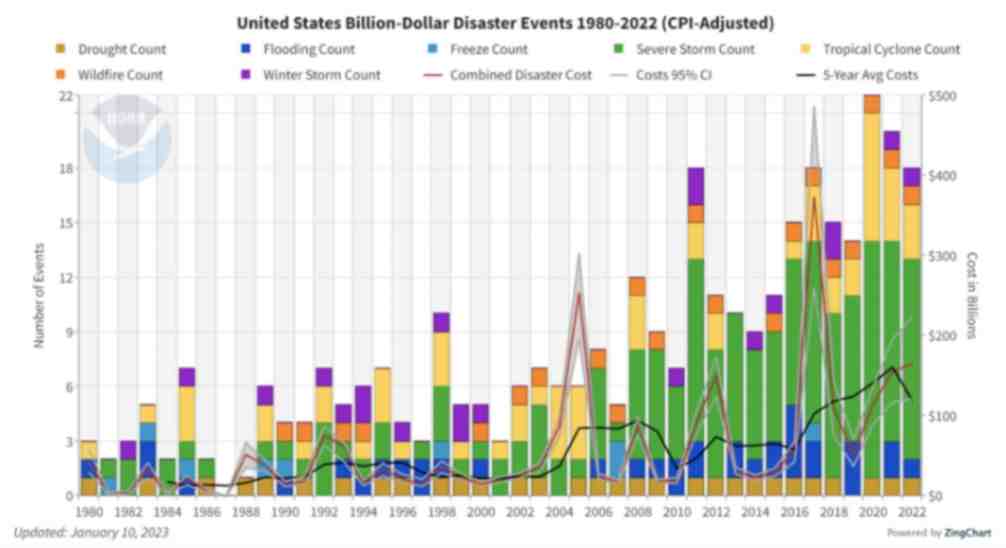
Figure 1. The history of billion-dollar disasters in the United States each year from 1980 to 2022 (source: NOAA)
In terms of loss prevention, a Catastrophe (CAT) Modeling Study is the first step to understanding the exposure and potential financial loss from natural hazards or extreme weather events. CAT studies form the foundation for wider risk management strategies, and have significant implications for insurance costs and coverage.
Despite their importance, developers often view these studies as little more than a formality required for project financing. As a result, they are often conducted late in the development cycle, typically after a site has been selected. However, a strong case can be made for engaging early with an independent third party to perform a more rigorous site-specific technical assessment. Doing so can provide several advantages over traditional assessments conducted by insurance brokerage affiliates, who may not possess the specialty expertise or technical understanding needed to properly apply models or interpret the results they generate. One notable advantage of early-stage catastrophe studies is to help ensure that the range of insurance costs, which can vary from year to year with market forces, are adequately incorporated into the project financial projections.
The evolving threat of natural disasters
Over the past decade, the financial impact of natural hazard events globally has been almost three trillion dollars. In the U.S. alone, the 10-year average annual cost of natural disaster events exceeding $1 billion increased more than fourfold between the 1980s ($18.4 billion) and the 2010s ($84.5 billion).

Investors, insurers, and financiers of renewable projects have taken notice of this trend, and are subsequently adapting their behavior and standards accordingly. In the solar market, for example, insurance premiums increased roughly four-fold from 2019 to 2021. The impetus for this increase can largely be traced back to a severe storm in Texas in 2019, which resulted in an $80 million loss on 13,000 solar panels that were damaged by hail.
The event awakened the industry to the hazards severe storms present, particularly when it comes to large-scale solar arrays. Since then, the impact of convective weather on existing and planned installations has been more thoroughly evaluated during the underwriting process. However, far less attention has been given to the potential for other natural disasters; events like floods and earthquakes have not yet resulted in large losses and/or claims on renewable projects (including wind farms). The extraordinary and widespread effect of the recent Canadian wildfires may alter this behavior moving forward.
A thorough assessment, starting with a CAT study, is key to quantifying the probability of their occurrence — and estimating potential losses — so that appropriate measures can be taken to mitigate risk.
All models are not created equal
Industrywide, certain misconceptions persist around the use of CAT models to estimate losses from an extreme weather event or natural disaster.
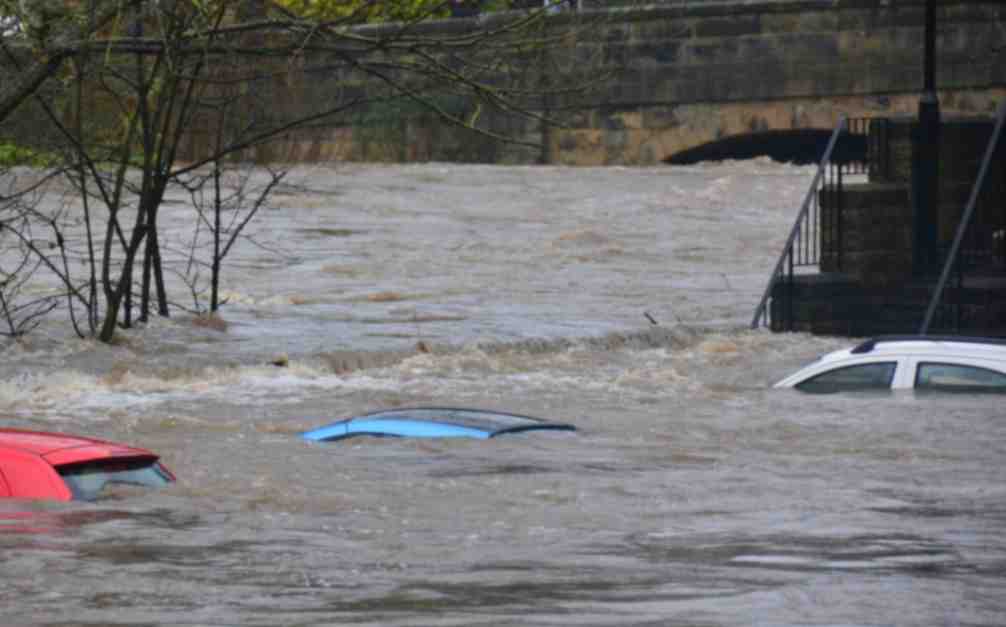
Often, the perception is that risk assessors only need a handful of model inputs to arrive at an accurate figure, with the geographic location being the most important variable. While it’s true that many practitioners running models will pre-specify certain project characteristics regardless of the asset’s design (for example, the use of steel moment frames without trackers for all solar arrays in a given region or state), failure to account for even minor details can lead to loss estimates that are off by multiple orders of magnitude.
The evaluation process has recently become even more complex with the addition of battery energy storage. Relative to standalone solar and wind farms, very little real-world experience and data on the impact of extreme weather events has been accrued on these large-scale storage installations. Such projects require an even greater level of granularity to help ensure that all risks are identified and addressed.
Even when the most advanced modeling software tools are used (which allow for thousands of lines of inputs), there is still a great deal that is subject to interpretation. If the practitioner does not possess the expertise or technical ability needed to understand the model, the margin for error can increase substantially. Ultimately, this can lead to overpaying for insurance. Worse, you may end up with a policy with insufficient coverage. In both cases, the profitability of the asset is impacted.
Supplementing CAT studies
In certain instances, it may be necessary to supplement CAT models with an even more detailed analysis of the individual property, equipment, policies, and procedures. In this way, an unbundled risk assessment can be developed that is tailored to the project. Supplemental information (site-specific wind speed studies and hydrological studies, structural assessment, flood maps, etc.) can be considered to adjust vulnerability models.
This provides an added layer of assurance that goes beyond the pre-defined asset descriptions in the software used by traditional studies or assessments. By leveraging expert elicitations, onsite investigations, and rigorous engineering-based methods, it is possible to discretely evaluate asset-specific components as part of the typical financial loss estimate study: this includes Normal Expected Loss (NEL), also known as Scenario Expected Loss (SEL); Probable Maximum Loss (PML), also known as Scenario Upper Loss (SUL); and Probabilistic Loss (PL).
Understanding the specific vulnerabilities and consequences can afford project stakeholders unique insights into quantifying and prioritizing risks, as well as identifying proper mitigation recommendations.
Every project is unique
The increasing frequency and severity of natural disasters and extreme weather events globally is placing an added burden on the renewable industry, especially when it comes to project risk assessment and mitigation. Insurers have signaled that insurance may no longer be the main basis for transferring risk; traditional risk management, as well as site and technology selection, must be considered by developers, purchasers, and financiers.
As one of the first steps in understanding exposure and the potential capital loss from a given event, CAT studies are becoming an increasingly important piece of the risk management puzzle. Developers should treat them as such by engaging early in the project lifecycle with an independent third-party practitioner with the specialty knowledge, tools, and expertise to properly interpret models and quantify risk.
Hazards and potential losses can vary significantly depending on the project design and the specific location. Every asset should be evaluated rigorously and thoroughly to minimize the margin for error, and maximize profitability over its life.
 Chris LeBoeuf is Global Head of the Extreme Loads and Structural Risk division of ABS Group, based in San Antonio, Texas. He leads a team of more than 60 engineers and scientists in the US, UK, and Singapore, specializing in management of risks to structures and equipment related to extreme loading events, including wind, flood, seismic and blast. Chris has more than 20 years of professional experience as an engineering consultant, and is a recognized expert in the study of blast effects and blast analysis, as well as design of buildings. He holds a Bachelor of Science in Civil Engineering from The University of Texas at San Antonio, and is a registered Professional Engineer in 12 states.
Chris LeBoeuf is Global Head of the Extreme Loads and Structural Risk division of ABS Group, based in San Antonio, Texas. He leads a team of more than 60 engineers and scientists in the US, UK, and Singapore, specializing in management of risks to structures and equipment related to extreme loading events, including wind, flood, seismic and blast. Chris has more than 20 years of professional experience as an engineering consultant, and is a recognized expert in the study of blast effects and blast analysis, as well as design of buildings. He holds a Bachelor of Science in Civil Engineering from The University of Texas at San Antonio, and is a registered Professional Engineer in 12 states.
ABS Group | www.abs-group.com

Grid modernization is having a profound impact on the nature and regulation of North American utilities. It represents a significant change to the way energy is managed, distributed, and used—today and in the future. As Environmental, Social, and Governance (ESG) targets become increasingly important to energy investors and regulators, how can organizations transform their Asset Investment Planning (AIP) processes to overcome challenges and take advantage of emerging opportunities?

Grid modernization
The energy transition refers to the global energy sector’s shift from fossil-based systems of energy production and consumption to renewable energy sources like wind and solar, as well as long-term energy storage such as batteries. The increasing penetration of renewable energy into the energy supply mix and the onset of electrification and improvements in energy storage are key drivers of the energy transition.
Grid modernization is a subset of the energy transition, and refers to changes needed in the electric transmission and distribution (T&D) systems to accommodate these rapid and innovative technological changes. Grid modernization often necessitates the increased application of sensors, computers, and communications to increase the intelligence of the grid and its ability to respond swiftly to external factors. The main goals of the grid are to provide the capacity, reliability, and flexibility needed to adapt to a whole range of new technologies (in the drive to net zero), while maintaining a comparable level of service and cost to the end customer.
Grid modernization projects are driven by both climate resilience through hardening of assets and changes to the T&D network to accommodate climate mitigation strategies. There are 3 broad categories for these types of projects:
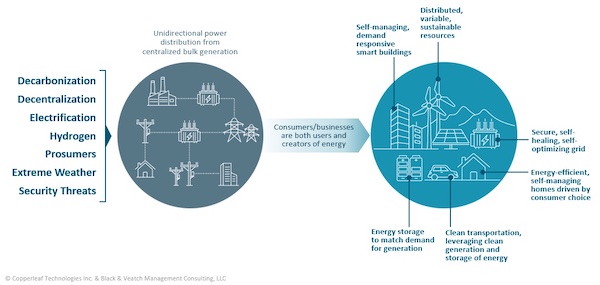
Grid modernization is accelerating due to multiple factors, such as decarbonization, electrification, extreme weather, and security threats.
Valuing innovative projects
The changing demands dictated by grid modernization will require organizations to strike the right balance between cost-effectively managing the current business, while investing appropriately to meet future demands. Organizations are already seeing an increase in both the volume and variety of grid modernization projects. This is leading to increased planning complexity, requiring utilities to demonstrate that they are spending their limited budgets and resources to maximize value and drive their ESG and performance targets.
A value-based approach to investment decision making is key to establishing a common basis to evaluate potential investment opportunities and meet the challenges of grid modernization. The key to achieving your organization’s grid modernization goals is building a multi-year plan that breaks the work into executable chunks. This ensures adequate funding and resources are available to carry out the plan in the short-term, resulting in incremental progress toward longer-term objectives.
With a value-based decision-making approach, organizations can ensure they are making the right grid modernization investments—and justify their plans to internal and external stakeholders.
Align decisions with strategic objectives
Business leaders must develop frameworks that quantify the financial and non-financial benefits of all proposed investments on a common scale and understand how projects will contribute to their short- and long-term grid modernization initiatives and broader energy transition goals. A value framework also creates a clear line of sight from planned investments to regulatory and corporate targets, allowing organizations to provide transparency into the decision-making methodology—and demonstrate the benefits of their plans to regulators, stakeholders, and customers:
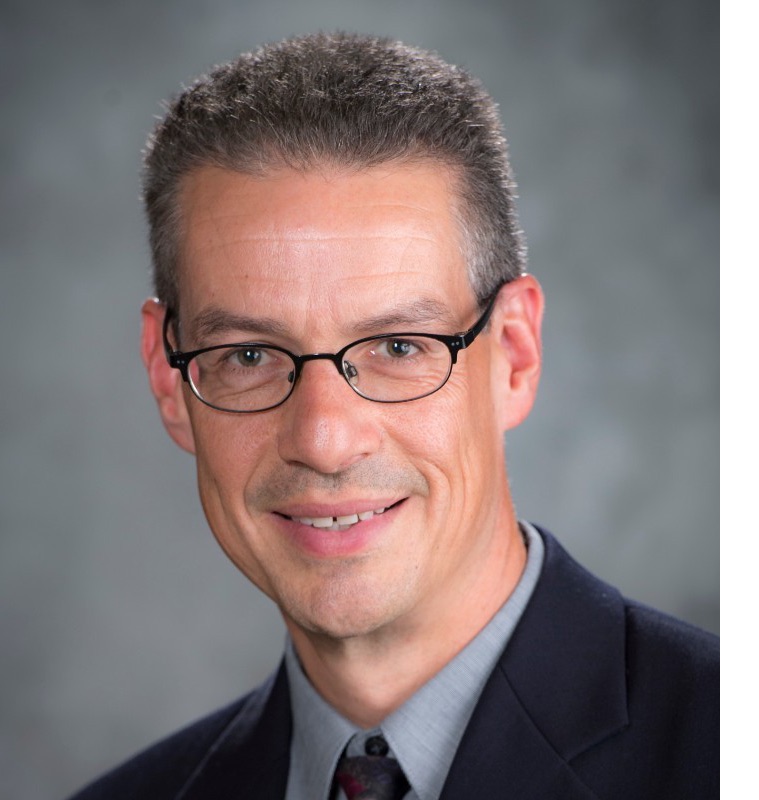 Russ is a Director of Product Management, Decision Analytics at Copperleaf. He is an innovative leader with over 20 years of comprehensive business and technical experience in high-tech product development organizations. Russ holds a B.A.Sc. in Mechanical Engineering from the University of British Columbia and a Management of Technology MBA from Simon Fraser University.
Russ is a Director of Product Management, Decision Analytics at Copperleaf. He is an innovative leader with over 20 years of comprehensive business and technical experience in high-tech product development organizations. Russ holds a B.A.Sc. in Mechanical Engineering from the University of British Columbia and a Management of Technology MBA from Simon Fraser University.
Copperleaf | www.copperleaf.com
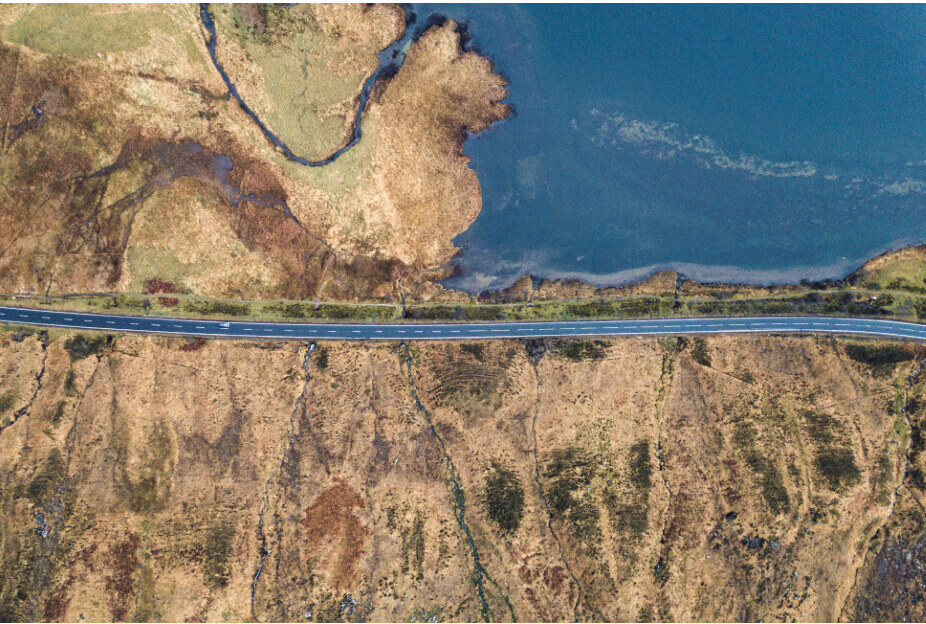
What’s underneath the surface of the land that you plan to develop and who owns it? Identifying owners of mineral rights is critical for utility-scale solar energy projects, especially in regions where these rights are legally separable from surfac....

Since the passage of the Inflation Reduction Act nearly two years ago, U.S. solar panel makers navigate a promising market amid production, legal, and investment considerations Nearly two years after U.S. President Joe Biden signed the Inflation R....
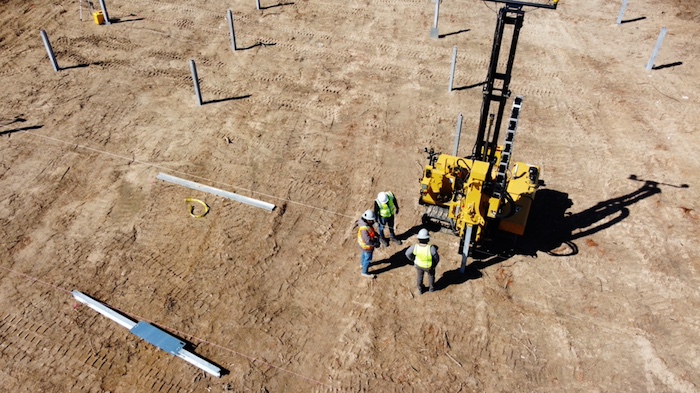
The global shift towards clean energy — exemplified by the widespread adoption of solar power — is not only a beacon of hope for a sustainable future, but also comes with heightened expectations for responsible project execution. From the initial....
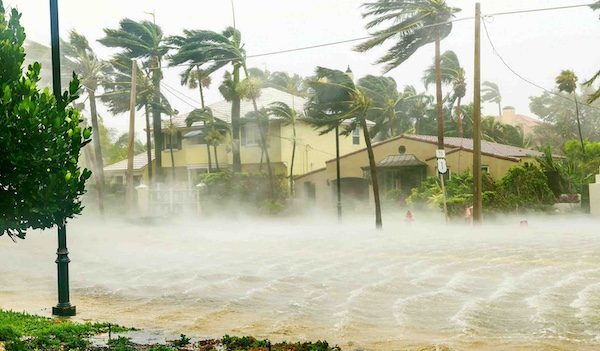
The impacts of climate change are becoming increasingly more apparent as communities around the world experience extreme weather events. From hurricanes and floods to droughts and wildfires, these types of events can have profound negatives effects o....

When thinking of renewable energy sources, you most likely picture solar panels or massive wind turbines, churning out energy to reduce the strain on electric grids and helping towns and businesses meet lofty sustainability goals. However, when an ex....
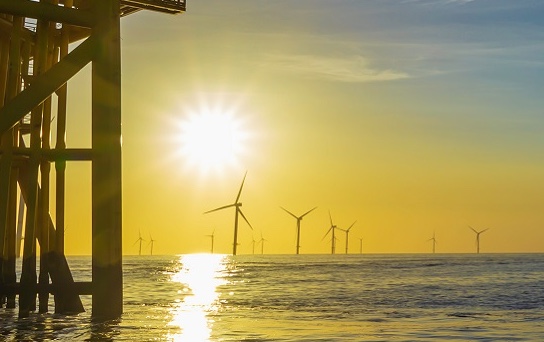
The US offshore wind sector has entered 2024 with cautious optimism as the industry shakes off negativity from last year, ready to apply learnings from a challenging 2023 to the year ahead. There are already key projects in the pipeline, including th....

As the world accelerates its transition to renewable energy sources, the deployment of energy storage solutions has surged to meet the demands of this ongoing transformation. Battery Energy Storage System (BESS) capacity is likely to quintuple betwee....

On April 19, 2019, a thermal runaway event took place in a battery energy storage unit (ESS) located within a building in Surprise, Arizona. The ESS was provided with fire detection and fire suppression, which both activated. Approximately five hours....
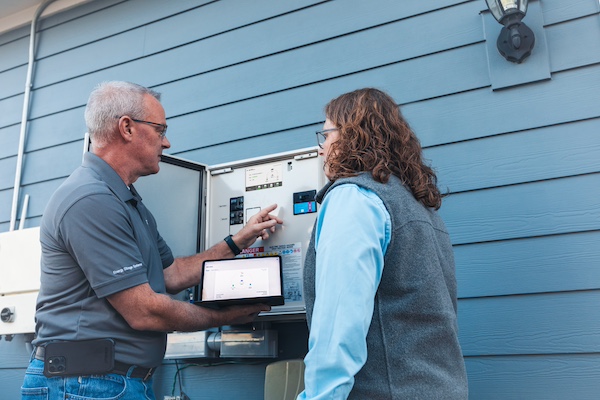
The summer of 2023 was the hottest in recorded history, hitting the United States with disproportionate force. A climatology report by PBS explained that the terrain in and surrounding the U.S. contributes to powerful competing air masses t....
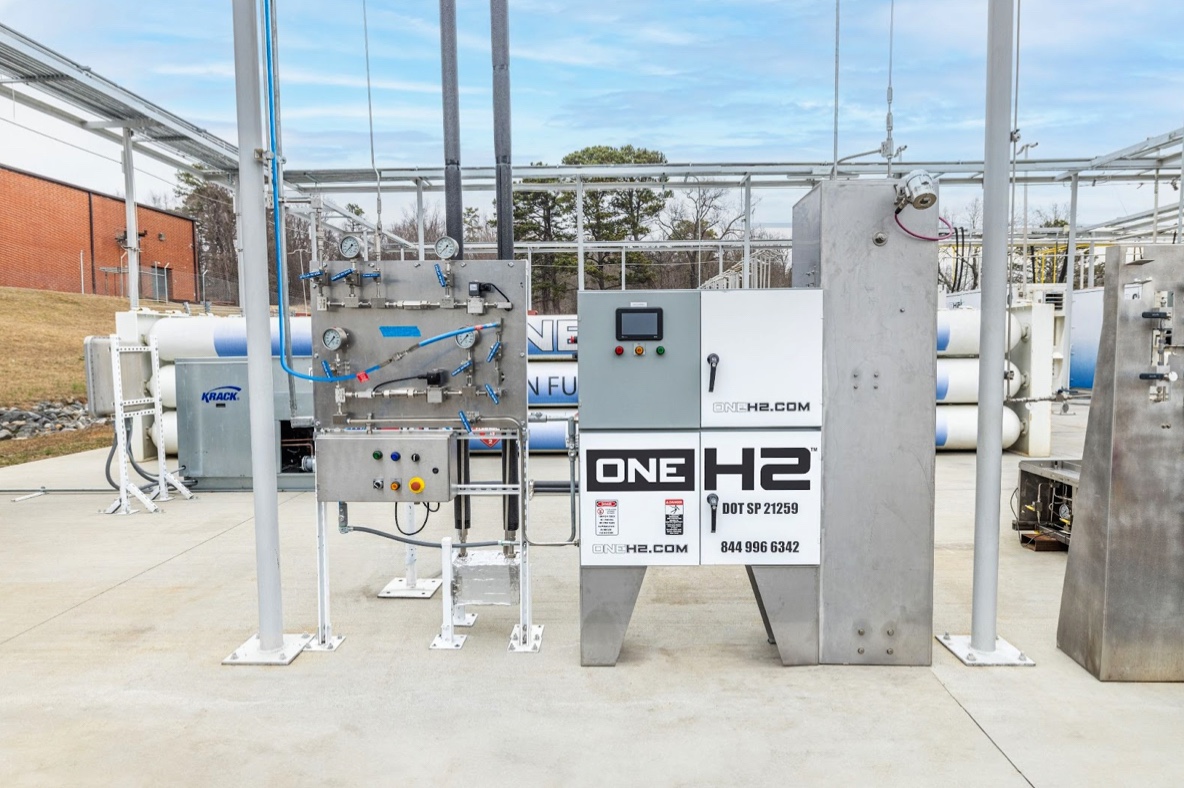
As industrial operations look for opportunities to decrease their carbon emissions, hydrogen fuel cell vehicles and battery-electric vehicles have emerged as potential solutions. These power options generate zero carbon emissions at the tai....

In the last five years, North America has experienced a significant increase in severe weather events that have impacted power grids. In Canada, Alberta's electric system operator issued 17 provincial grid alerts since 2021, due to extreme weather co....

Now more than ever, it would be difficult to overstate the importance of the renewable energy industry. Indeed, it seems that few other industries depend as heavily on constant and rapid innovation. This industry, however, is somewhat unique in its e....